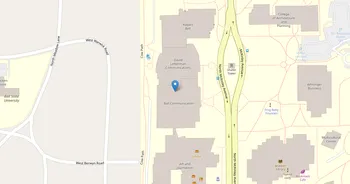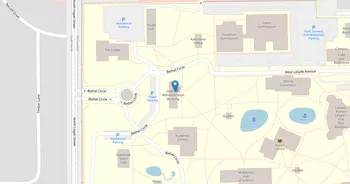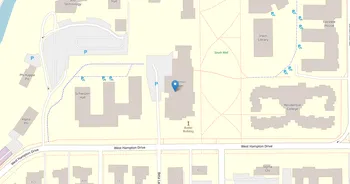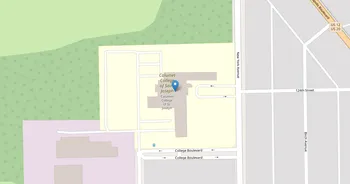Anderson University : Overview, Courses, Scholarships & Rankings
About Anderson University
Rooted in the Christian heritage of the Church of God, Anderson University blends a liberal-arts core with practical learning. Faculty know students by name and push them to think clearly and act with purpose. Strengths span the arts, business, education, health sciences, and the humanities. Labs, studios, performance spaces, and a bright library support the work, with tutoring, advising, counseling, and a career center in your corner.
Campus life feels close-knit and lively. And expect coffeehouse sets, theater nights, worship gatherings, intramurals, and green space for pickup games. The rec center stays busy, and service projects show up often. Off campus, local coffee shops, parks, and a historic downtown theater offer easy escapes, with Indianapolis close enough for real-world networking. The culture is friendly and faith-shaped, with chapel a steady rhythm. Notable alum: singer-songwriter Jon McLaughlin.
Key Institutional Details
Contact & Profile
Academic & Institutional
Academic Programs & Fields of Study
Anderson University offers 49 degree programs across 21 major academic fields, graduating approximately 288 students annually. The most popular fields by graduate volume are Business (6 programs, 78 graduates), Health (2 programs, 29 graduates), Education (6 programs, 28 graduates), Arts (8 programs, 28 graduates) and Psychology (1 programs, 19 graduates). Explore program details, award levels, and graduate demographics below.
Business (6 programs, 78 graduates)
Business Administration, Marketing and Entrepreneurship
| Program Name | Graduates | Gender Distribution | Award Levels | CIP Code |
|---|---|---|---|---|
| Business Administration and Management | 42 |
|
Bachelor's
Master's
Doctorate (R)
|
52.0201 |
| Marketing Management | 12 |
|
Bachelor's
Doctorate (R)
|
52.1401 |
| Finance, General | 10 |
|
Bachelor's
Doctorate (R)
|
52.0801 |
| Accounting | 6 |
|
Bachelor's
Doctorate (R)
|
52.0301 |
| Marketing | 5 |
|
Bachelor's
|
52.1499 |
| Organizational Leadership | 3 |
|
Bachelor's
|
52.0213 |
Health (2 programs, 29 graduates)
Healthcare Professions, Medical Sciences and Clinical Practice
| Program Name | Graduates | Gender Distribution | Award Levels | CIP Code |
|---|---|---|---|---|
| Registered Nursing | 28 |
|
Bachelor's
|
51.3801 |
| Athletic Training | 1 |
|
Bachelor's
|
51.0913 |
Education (6 programs, 28 graduates)
Educational Sciences, Teaching Methods and Pedagogy
| Program Name | Graduates | Gender Distribution | Award Levels | CIP Code |
|---|---|---|---|---|
| Music Teacher Education | 13 |
|
Bachelor's
Master's
|
13.1312 |
| Elementary Education | 8 |
|
Bachelor's
|
13.1202 |
| General Education | 3 |
|
Bachelor's
|
13.0101 |
| Social Studies Teacher Education | 2 |
|
Bachelor's
|
13.1318 |
| English Language Arts Teacher Education | 1 |
|
Bachelor's
|
13.1305 |
| Physical Education Teaching and Coaching | 1 |
|
Bachelor's
|
13.1314 |
Arts (8 programs, 28 graduates)
Fine Arts, Design Studies and Creative Performance
| Program Name | Graduates | Gender Distribution | Award Levels | CIP Code |
|---|---|---|---|---|
| Music Management | 7 |
|
Bachelor's
|
50.1003 |
| Musical Theatre | 6 |
|
Bachelor's
|
50.0509 |
| Cinematography and Film Production | 5 |
|
Bachelor's
|
50.0602 |
| Dance | 3 |
|
Bachelor's
|
50.0301 |
| Design and Visual Communications | 2 |
|
Bachelor's
|
50.0401 |
| Theatre Arts | 2 |
|
Bachelor's
|
50.0501 |
| Music | 2 |
|
Bachelor's
|
50.0901 |
| Music Performance | 1 |
|
Bachelor's
|
50.0903 |
Psychology (1 programs, 19 graduates)
Psychological Sciences, Mental Health and Behavioral Studies
| Program Name | Graduates | Gender Distribution | Award Levels | CIP Code |
|---|---|---|---|---|
| General Psychology | 19 |
|
Bachelor's
|
42.0101 |
Kinesiology (2 programs, 18 graduates)
Exercise Science, Sports Medicine and Physical Recreation
| Program Name | Graduates | Gender Distribution | Award Levels | CIP Code |
|---|---|---|---|---|
| Exercise Science and Kinesiology | 13 |
|
Bachelor's
|
31.0505 |
| Sport and Fitness Management | 5 |
|
Bachelor's
|
31.0504 |
Theology (3 programs, 18 graduates)
Theological Studies, Ministry Preparation and Religious Leadership
| Program Name | Graduates | Gender Distribution | Award Levels | CIP Code |
|---|---|---|---|---|
| Theological Studies | 10 |
|
Bachelor's
Master's
|
39.0601 |
| Divinity and Ministry | 7 |
|
Master's
|
39.0602 |
| Sacred Music | 1 |
|
Bachelor's
|
39.0501 |
Engineering (5 programs, 12 graduates)
Engineering Sciences and Applied Technology Solutions
| Program Name | Graduates | Gender Distribution | Award Levels | CIP Code |
|---|---|---|---|---|
| Mechanical Engineering | 5 |
|
Bachelor's
|
14.1901 |
| Electrical and Electronics Engineering | 3 |
|
Bachelor's
|
14.1001 |
| Computer Engineering | 2 |
|
Bachelor's
|
14.0901 |
| Engineering Physics | 1 |
|
Bachelor's
|
14.1201 |
| Mechatronics and Robotics Engineering | 1 |
|
Bachelor's
|
14.4201 |
Security & Safety (1 programs, 11 graduates)
Emergency Management, Law Enforcement and Public Safety
| Program Name | Graduates | Gender Distribution | Award Levels | CIP Code |
|---|---|---|---|---|
| Criminal Justice and Safety Studies | 11 |
|
Associate's
Bachelor's
|
43.0104 |
Computer & IT (2 programs, 9 graduates)
Computer Science, Information Technology and Cybersecurity
| Program Name | Graduates | Gender Distribution | Award Levels | CIP Code |
|---|---|---|---|---|
| Computer Science | 6 |
|
Bachelor's
|
11.0701 |
| Information Systems Security and Auditing | 3 |
|
Bachelor's
|
11.1003 |
Admission Requirements & Test Scores
Comprehensive overview of admission criteria, standardized test score ranges, and application requirements for prospective students at Anderson University.
Application Requirements
Data based on IPEDS for 2022-2023 academic year. Test score ranges represent the middle 50% of admitted students (25th-75th percentile). Requirements may vary by program.
Tuition, Fees & Estimated Costs
Overview of tuition rates, housing, and other annual education expenses for undergraduate and graduate students
Financial Aid & Student Support
Summary of scholarships, grants, student loans, and financial aid statistics for undergraduate students
Student Success Metrics
Graduation rates and post-graduation earnings to help assess student outcomes and long-term value of education.
Loan Burden & Repayment Outcomes
Breakdown of loan repayment rates and student debt levels by income and dependency status.
Frequently Asked Questions
Find answers to the most common questions about Anderson University
How much does it cost to attend Anderson University?
The annual tuition at Anderson University is $35,640 for in-state students. When including room and board, books, and other expenses, the total estimated cost is approximately $52,590 for in-state students. Additional costs include room and board $12,250 (on) / $8,300 (off) and books and supplies $1,500.
Data based on IPEDS program completions for 2022-2023 academic year. Tuition and cost estimates are approximate and may not include all fees, personal expenses, or transportation costs.
What academic programs and degree levels does Anderson University offer?
Anderson University offers 49 academic programs across 21 major fields of study, with available degree levels: Associate's, Bachelor's, Master's, Doctorate (Research).
Most popular program areas include:
- Business Administration, Marketing and Entrepreneurship (6 programs)
- Healthcare Professions, Medical Sciences and Clinical Practice (2 programs)
- Educational Sciences, Teaching Methods and Pedagogy (6 programs)
- Fine Arts, Design Studies and Creative Performance (8 programs)
- Psychological Sciences, Mental Health and Behavioral Studies (1 programs)
Data based on IPEDS program completions for 2023-2024 academic year. Numbers reflect programs where students graduated, not all offered programs.
What is the acceptance rate for Anderson University?
Anderson University has an 53.4% acceptance rate and a 10.3% yield rate, making it selective.
Admission statistics breakdown:
- Total applicants: 5,661
- Students admitted: 3,024
- Students enrolled: 310
Data based on IPEDS for 2022-2023 academic year. Admission statistics may vary by program and application cycle.
What financial aid and scholarships are available at Anderson University?
Anderson University provides financial aid to 29% of first-time, full-time students, with average grants of $27,121 and average loans of $6,661.
Average financial aid amounts by type:
- Pell grants: $4,905
- State/Local grants: $6,844
- Institutional grants: $22,844
- Federal loans: $5,154
The university supports 323 students with grants and 208 students with loans annually.
Data based on IPEDS for 2022-2023 academic year. Financial aid amounts and percentages may vary by program, enrollment status, and individual circumstances.
What is the average salary for Anderson University graduates?
Anderson University graduates earn a median salary of $44,396 after 6 years and $48,899 after 10 years.
The salary range 10 years after graduation spans from $30,753 (25th percentile) to $72,582 (75th percentile).
Data based on IPEDS for 2022-2023 academic year. Salary data reflects graduates who received federal financial aid (approximately 60% of all graduates). Actual earnings may vary significantly based on program, location, and individual circumstances.
Related Universities




Found something useful? Help others discover it too! Share with friends, on social media, or save for later - every share helps someone find the information they need.